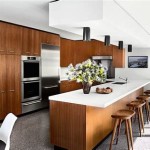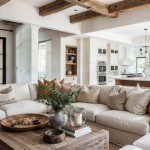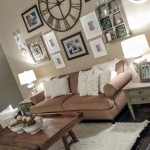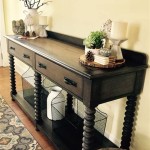```html
How to Decorate a Studio Apartment
Decorating a studio apartment presents a unique set of challenges and opportunities. Space is naturally limited, requiring careful consideration of layout, furniture choices, and storage solutions. Successful studio apartment decoration revolves around maximizing available space, creating distinct zones for different activities, and establishing a cohesive and aesthetically pleasing environment.
The key to successfully decorating a studio lies in strategic planning and a commitment to minimalism. Overcrowding a small space leads to a feeling of claustrophobia and disorganization. Instead, a thoughtful approach to selection of essential furniture and decor will make a studio apartment appear larger and more inviting.
Prioritizing Functionality and Multi-Purpose Furniture
In a studio apartment, furniture must serve multiple purposes whenever possible. A sofa bed, for example, provides seating during the day and transforms into a sleeping space at night. Ottomans with storage compartments can function as footrests, coffee tables, and organizational vessels. Selecting furniture with built-in storage is crucial for minimizing clutter and optimizing available space.
Consider a dining table that folds down or expands as needed. A console table behind a sofa can double as a workspace or a bar area. These types of adaptable pieces allow residents to configure their living space according to their needs at various times of the day. When selecting furniture, ensure that the proportions are appropriate for the size of the studio. Oversized pieces will overwhelm the room, while undersized pieces may appear insignificant.
Wall-mounted shelving is an excellent way to maximize vertical space and provide storage without taking up valuable floor area. Shelves can be used to display books, decorative items, or even kitchenware. Floating desks that attach to the wall are also a space-saving option for creating a dedicated workspace without sacrificing floor space. When choosing multi-purpose furniture, prioritize quality and durability. These pieces will likely be used frequently and should be able to withstand daily wear and tear.
Furthermore, consider the flow of movement within the studio. Avoid furniture arrangements that create bottlenecks or impede access to different areas. Leave ample space for walking around and ensure that furniture is positioned in a way that maximizes natural light. Thoughtful furniture placement can significantly impact the overall feel and functionality of a small living space.
Creating Distinct Zones Within a Single Room
In a studio apartment, it is essential to define clear zones for different activities, such as sleeping, working, and relaxing. This can be achieved through various techniques, including the use of room dividers, area rugs, and strategic furniture placement. Creating distinct zones helps to create a sense of separation and organization within a single room.
Room dividers, such as screens, bookshelves, or curtains, can be used to physically separate the sleeping area from the living area. This provides a sense of privacy and creates a more defined distinction between work and rest. Bookshelves can also provide storage space while simultaneously serving as a room divider. Curtains offer a more flexible and space-saving option, allowing the resident to easily open or close off the sleeping area as needed.
Area rugs are another effective way to visually define different zones. Placing a rug underneath the living room furniture helps to anchor the space and create a sense of cohesiveness. Similarly, a smaller rug can be used to define a workspace or a dining area. The use of different colors and patterns can further enhance the differentiation between zones.
Furniture placement also plays a crucial role in defining zones. Arranging furniture to create natural boundaries can help to delineate different areas within the studio. For example, a sofa can be positioned to separate the living area from the kitchen or dining area. A desk can be placed in a corner of the room to create a dedicated workspace. When arranging furniture, consider the flow of movement and ensure that each zone is easily accessible.
In addition to physical barriers, lighting can also be used to define zones. Using different types of lighting in different areas can help to create a distinct atmosphere and differentiate between activities. For example, brighter lighting can be used in the workspace, while softer, warmer lighting can be used in the living area. The use of lamps, overhead lighting, and accent lighting can all contribute to the overall zoning of the studio apartment.
Maximizing Light and Employing Color Strategically
Light, both natural and artificial, is essential for making a small space feel larger and more inviting. Maximize natural light by keeping windows clear and using light-colored window treatments. Mirrors can also be used to reflect light and create the illusion of more space. Strategic use of artificial lighting can further enhance the brightness and ambiance of the studio.
Avoid heavy curtains or blinds that block natural light. Instead, opt for sheer or light-filtering curtains that allow sunlight to enter the room while still providing some privacy. If privacy is a concern, consider using window film or frosted glass. Regularly clean windows to ensure that they are allowing the maximum amount of light to pass through.
Mirrors are an excellent tool for reflecting light and creating the illusion of more space. Place a large mirror on a wall opposite a window to reflect the natural light throughout the room. Mirrors can also be used to visually expand narrow hallways or alcoves. Consider using mirrored furniture or decorative items to further enhance the reflective effect.
When it comes to artificial lighting, layer different types of light to create a balanced and well-lit environment. Overhead lighting provides general illumination, while lamps offer task lighting and ambient lighting. Use a combination of floor lamps, table lamps, and pendant lights to create a layered lighting scheme. Consider using dimmers to adjust the brightness of the lights and create different moods.
Color plays a significant role in the perceived size and atmosphere of a studio apartment. Light and neutral colors tend to make a space feel brighter and more spacious, while darker colors can make a room feel smaller and more enclosed. When selecting paint colors, opt for light shades of white, gray, or beige. These colors reflect light and create a sense of openness.
Accent colors can be used to add personality and visual interest to the space. Use pops of color in accessories, such as pillows, blankets, and artwork. Consider using a bold color on a single accent wall to create a focal point. Avoid using too many colors, as this can make the space feel cluttered and overwhelming. Stick to a limited color palette to create a cohesive and harmonious look.
Furthermore, the color of furniture and textiles can also impact the overall feel of the studio. Light-colored furniture will make the space feel brighter and more open, while darker furniture can make it feel more grounded and intimate. Choose textiles with light and airy patterns to further enhance the sense of spaciousness.
In essence, decorating a studio apartment is a exercise in ingenuity and careful planning. Prioritizing multi-functional furniture, creating distinct zones, and maximizing light and strategic color usage all contribute to transforming a small space into a comfortable and inviting home.
```
How To Decorate A Studio Apartment On Budget Mckinley

How To Decorate A Studio Apartment On Budget Doğtaş

How To Decorate A Studio Apartment For Woman Designcafe

How To Decor A Small Studio Apartment On Budget

How To Decorate A Studio Apartment

How To Decorate A Studio Apartment

Best Studio Apartment Decor Ideas To Maximize Space Decorilla

How To Decorate A Studio Apartment The Nordroom

17 Studio Apartment Design Ideas For Small Spaces Extra Space Storage

Ideas For Decorating A Studio Apartment Homelane Blog







